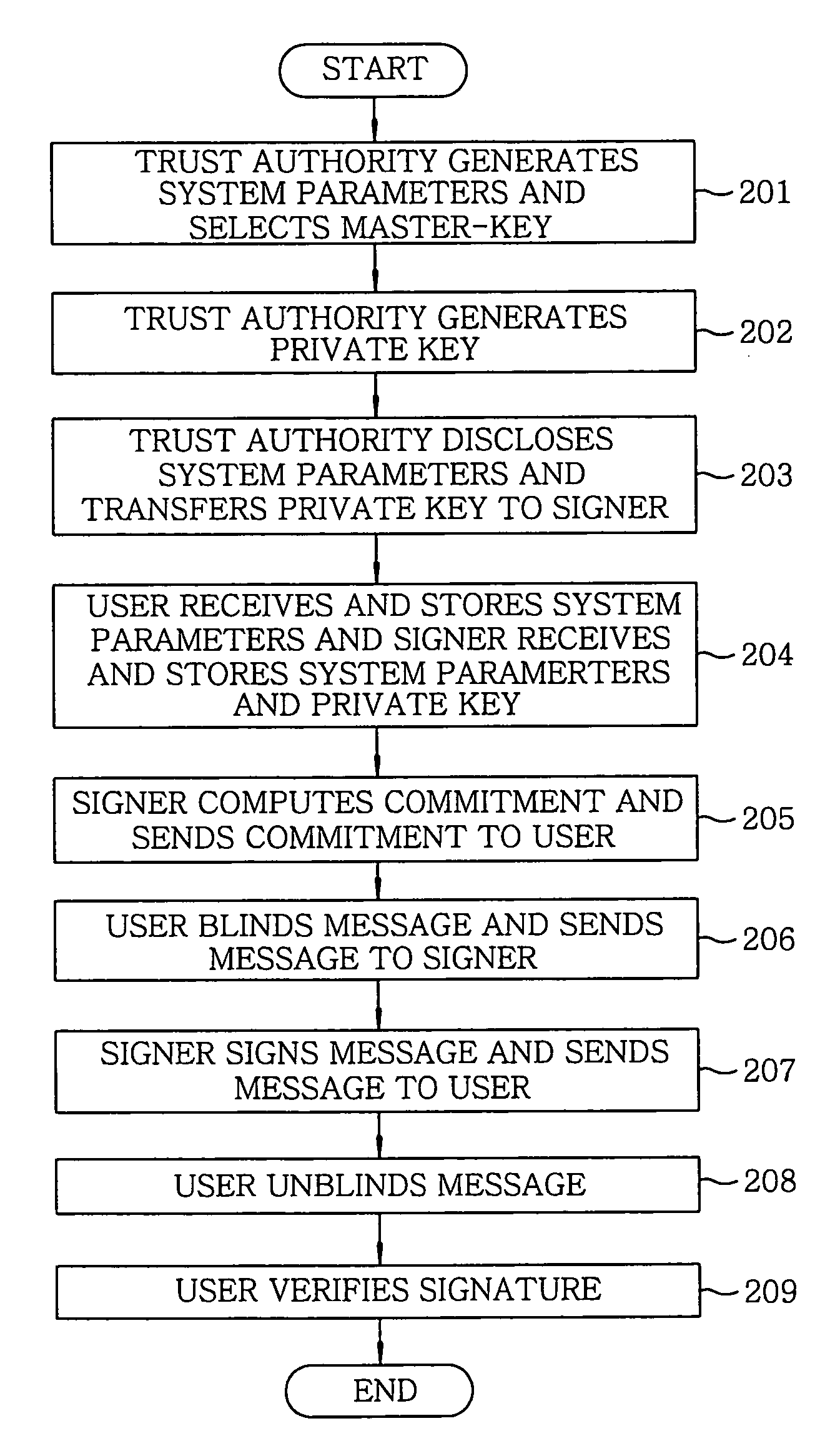Apparatus and method for generating and verifying ID-based blind signature by using bilinear parings
- Summary
- Abstract
- Description
- Claims
- Application Information
AI Technical Summary
Benefits of technology
Problems solved by technology
Method used
Image
Examples
Embodiment Construction
FIG. 1A illustrates an interaction among participants of a blind signature system in accordance with the present invention. The system includes three participants, i.e., a signer 100, a user 200 and a trust authority 300. Herein, each of participants of the system may be a computer system and may communicate with another remotely by using any kind of communications network or other techniques. The information to be transferred between the participants may be stored and / or held in various types of storage media.
The trust authority 300 generates system parameters and selects a master key. Further, the trust authority 300 generates a private key by using the signer's identity and the master key. Then, the trust authority 300 discloses or publishes the system parameters and transfers the private key to the signer 100 through a secure channel.
The user 200 receives the system parameters which the trust authority 300 provides. Then, the user 200 stores or holds them in a storage media. ...
PUM
 Login to View More
Login to View More Abstract
Description
Claims
Application Information
 Login to View More
Login to View More - R&D
- Intellectual Property
- Life Sciences
- Materials
- Tech Scout
- Unparalleled Data Quality
- Higher Quality Content
- 60% Fewer Hallucinations
Browse by: Latest US Patents, China's latest patents, Technical Efficacy Thesaurus, Application Domain, Technology Topic, Popular Technical Reports.
© 2025 PatSnap. All rights reserved.Legal|Privacy policy|Modern Slavery Act Transparency Statement|Sitemap|About US| Contact US: help@patsnap.com



